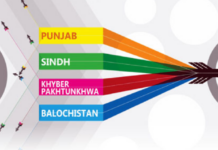KARACHI – Workers’ remittances to Pakistan rose sharply to $3.68 billion in May 2025, reflecting a 13.67% increase year-on-year and a 16% rise compared to April, according to data released by the State Bank of Pakistan (SBP) on Monday.
The steady upward trend in remittance inflows continues to bolster Pakistan’s external account, with cumulative inflows reaching $34.89 billion during the first eleven months (July–May) of FY2024–25. This marks a significant 28.79% increase compared to $27.09 billion received during the same period in the previous fiscal year.
The May 2025 inflows were primarily driven by remittances from major host countries of Pakistani migrant workers:
-
Saudi Arabia: $913.95 million
-
United Arab Emirates: $754.17 million
-
United Kingdom: $588.1 million
-
United States: $314.69 million
These four countries collectively contributed over 70% of the total remittances received in May, underscoring the continuing reliance on Middle Eastern and Western corridors.
May’s figures follow a record-setting March 2025, when remittances briefly crossed $4.05 billion — a surge attributed to Ramadan and Eid-related transfers, stronger use of formal banking channels, and improved labour market conditions in the Gulf. Analysts also point to enhanced monitoring and incentives for routing remittances through official channels as key drivers of growth throughout the year.
During his budget speech for FY2025–26, Finance Minister Muhammad Aurangzeb projected that remittances would close the fiscal year between $37–38 billion, which would be a record high for Pakistan. He noted that these flows, along with improved current account management, are expected to support the SBP’s foreign exchange reserves, which are projected to reach $1 billion.
Remittances have emerged as a critical non-debt-creating source of foreign exchange for Pakistan, helping to finance the country’s import bill, stabilize the rupee, and contain the current account deficit. With the country continuing to seek a long-term arrangement with the International Monetary Fund (IMF), rising remittances improve Pakistan’s negotiating leverage by shoring up external buffers.
The sharp growth in inflows during FY2025 has also alleviated pressure on the SBP to impose stringent capital controls or restrict imports as seen in earlier years. However, sustainability remains a concern, especially if global oil prices decline or geopolitical instability affects the Gulf labour market, where millions of Pakistanis are employed.
With one month remaining in the fiscal year, Pakistan is on track to surpass its highest-ever annual remittance figure. If current trends persist, the government’s upper-end target of $38 billion may be within reach — a development that could provide some breathing space amid ongoing fiscal consolidation and reform measures under discussion for the next IMF program.























